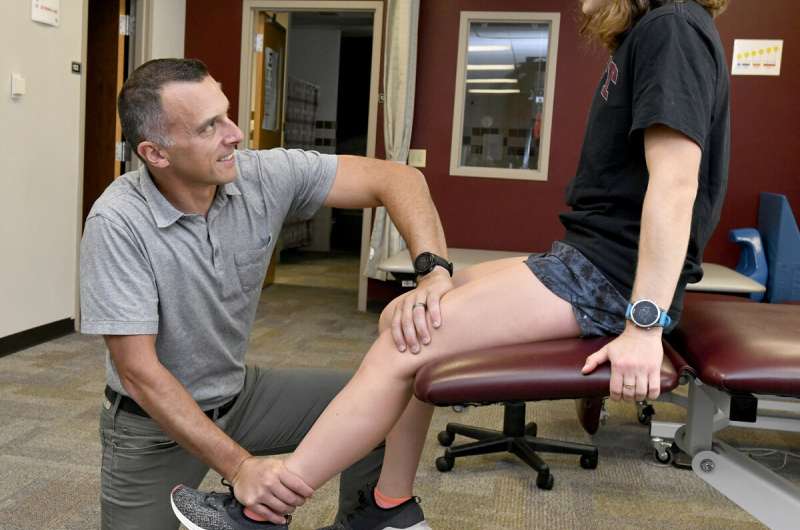UM physical therapy professor authors new guideline on treating runner's knee

University of Montana Assistant Professor Richard Willy is the lead author on a paper that offers new guidelines for treating patellofemoral pain, often known as "runner's knee."
Patellofemoral pain (PFP) affects one in four of the general population every year, with women reporting PFP twice as often as men. The pain presents at the front of the knee, under and around the kneecap. Willy's paper finds that exercise therapy—namely hip and knee strengthening treatments prescribed by a physical therapist—is the best recovery approach for individuals with PFP.
Willy is an assistant professor in UM's School of Physical Therapy and Rehabilitation Sciences.
"While it might be tempting to seek quick fixes for knee pain, there is no evidence that non-active treatments alone, such as electrical stimulation, lumbar manipulations, ultrasound or dry needling, help persons with PFP," he said. "Persons with PFP should seek clinicians who use exercise therapy for the treatment of this injury."
The recommendations were published Sept. 1 as a Clinical Practice Guideline in the Journal of Orthopaedic & Sports Physical Therapy, the official scientific journal of the Academy of Orthopaedic Physical Therapy. The Clinical Practice Guideline aims to improve the quality and standardization of care provided to patients with knee pain while also providing reimbursement guidelines for insurance companies.Key takeaways from the Clinical Practice Guideline include:
- An exercise program that gradually increases activities such as running, exercise classes, sports or walking, is the best way to prevent PFP.
- Adolescent athletes who specialize in a single sport are at 28% greater risk of PFP than athletes who participate in a variety of sports.
- An important way to reduce the risk of PFP in military populations is maximizing leg strength, particularly the thigh muscles.
- Pain does not always mean there is damage to the knee.
More information: Richard W. Willy et al. Patellofemoral Pain, Journal of Orthopaedic & Sports Physical Therapy (2019). DOI: 10.2519/jospt.2019.0302

















